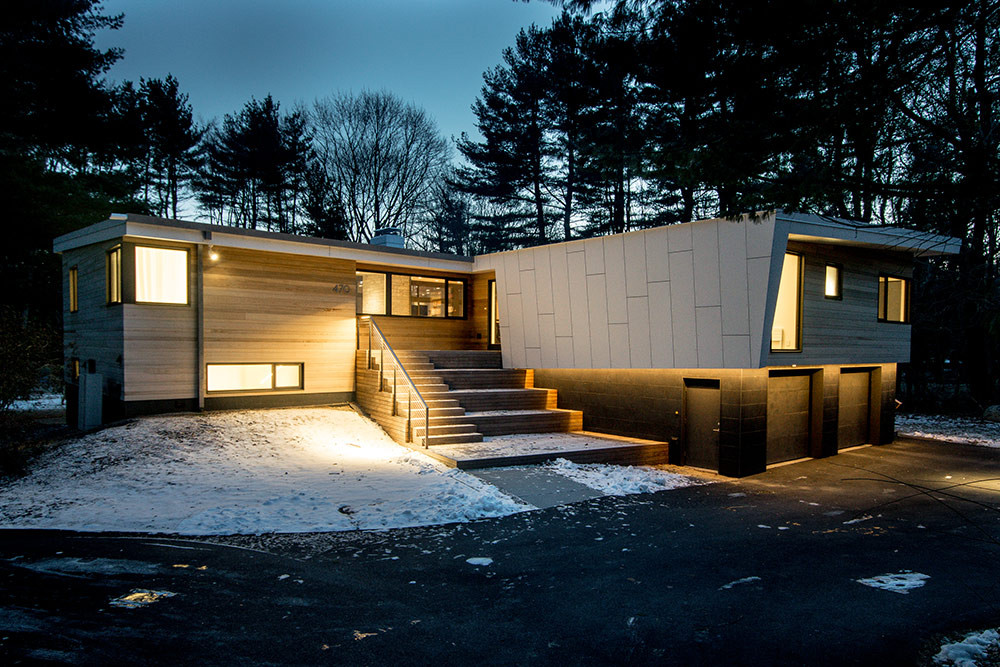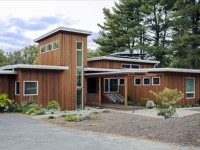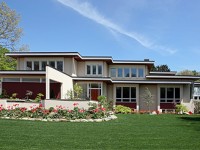Expanding a Mid-century Modern Dream
The original design takes advantage of passive solar heating with the use of the five feet overhang on the south facing facade. (Overhangs are also provided around the perimeter of the house to prevent solar heat gain, UV and water degradation of the cladding systems, just like a giant umbrella would.) The addition to the west extended the original design while maintaining the integrity of the original concept.
Thermally, the exterior walls and roof assembly are covered with a continuous layer of rigid insulation to prevent thermal bridging, while framing cavities are filled with open cell spray foam insulation. The thermal envelope of the building consists of R-20 under concrete slab, R-34 exterior walls, and R-56 and R-65 roof assemblies.
Alpen windows, with fiberglass frames, were used that consist of double pane insulated glazing with a suspended film in the middle to achieve the performance of triple pane windows without adding the weight and cost associated with typical triple pane windows.
The exterior cladding of the home is installed over furring strips to create a rain screen which provides drainage and airflow to promote drying of the cladding. There are three types of cladding used to protect the insulation layer. The lower levels are all clad with porcelain tile for water resistance and durability. The upper level is clad with cedar siding to add some warmth. The trim and soffit is a solid through-color fiber cement material, Silbonit. This material does not require any painting consistent with the theme of low maintenance and longevity.
The exposed concrete floor on the lower level is heated with radiant tubing in the slab providing constant comfort and durability. The second floor is heated with Hydronic Runtal Radiators. The primary heating is powered by a gas fired Lochinvar Knight boiler offering between 95 and 98% efficiency. Cooling is provided using five Mitsubishi Mini Ducted units powered by one Mitsubishi multi-zone condenser to take advantage of the latest in air-source heat pump technology and cooling efficiency.
Exterior envelope commissioning used a Blower Door test to determine the envelope’s air tightness. The test showed a 0.4 ACH 50 which comes in below the 0.6 threshold set by the Passive House Institute. With an envelope this tight, fresh air exchange is achieved with the continuous use of a Zender Comfoair ERV system that can recover up to 95% of the heat energy.
This home also displays many dramatic details that offer some architectural expression. On the exterior there is the selection of the exterior cladding, the sloped façade wall, and the entry stairs and railings.
Interior details include: interior minimalist detailing with no casing or baseboard throughout, flush “hidden” interior doors, the interior stair detailing and the walnut floors. The hand-set walnut flooring is composed of individual ¼’ x 1” x 6” strips, a byproduct of waste material made from scraps from a flooring mill. This material is solid providing a true one inch thick wearing surface, offering decades of service.
BRADFORD J. PRESTBO, AIA, CSI, CDT
Architectural Advisors























